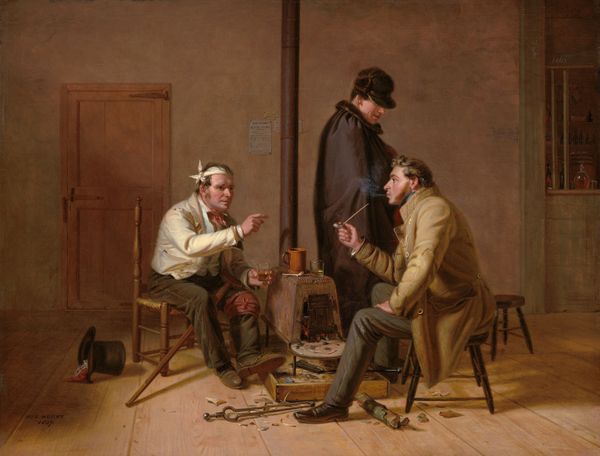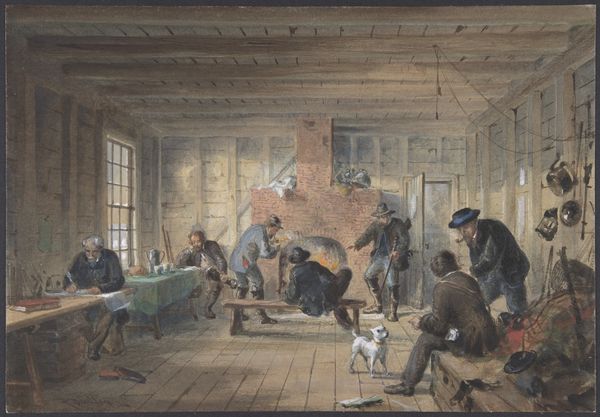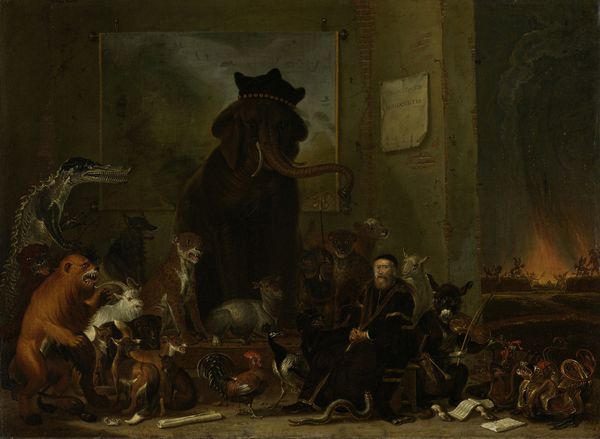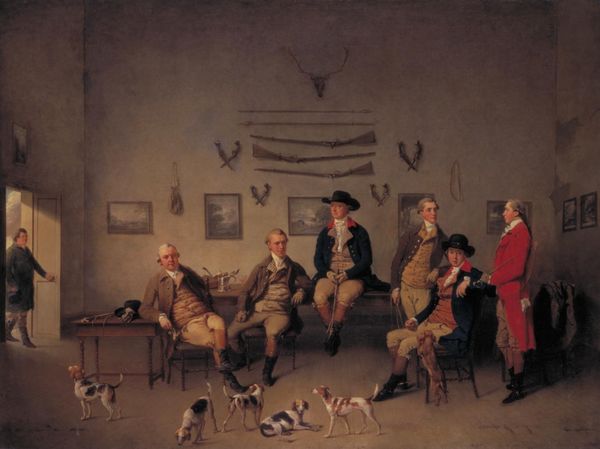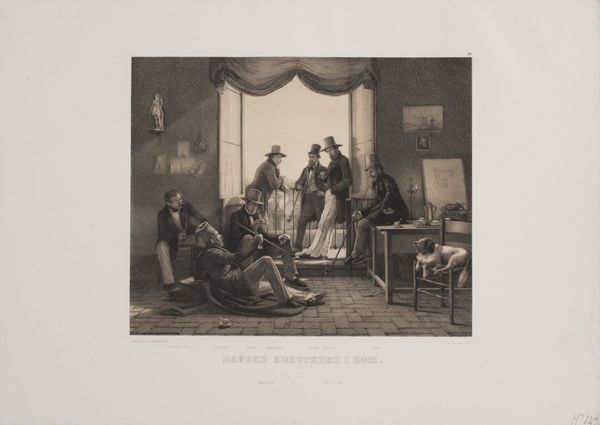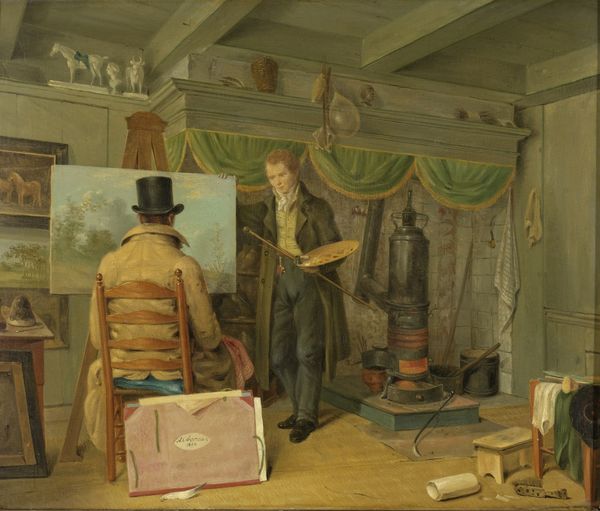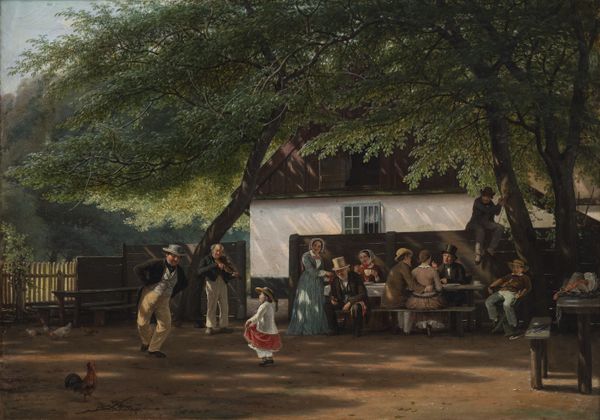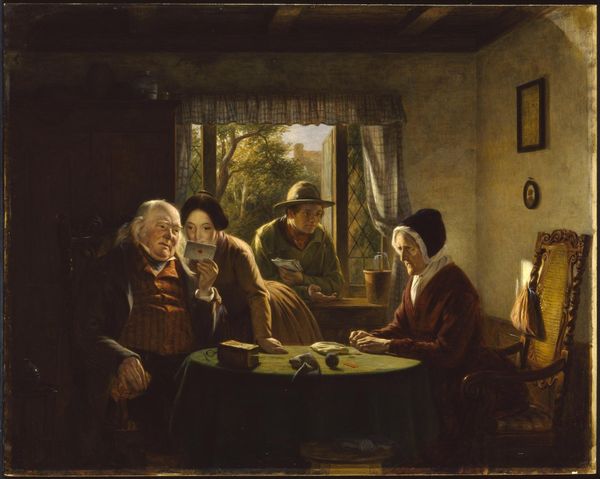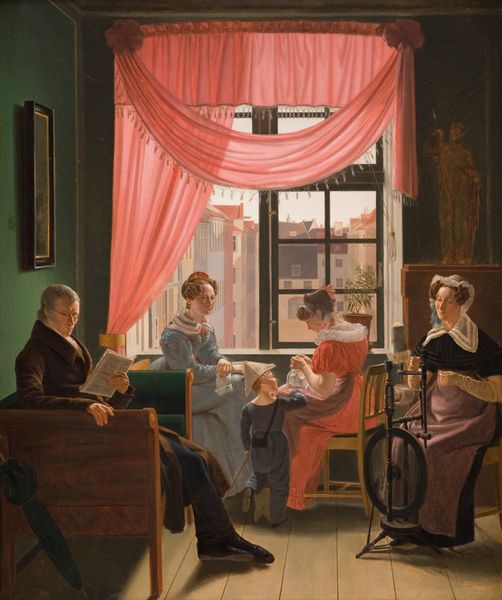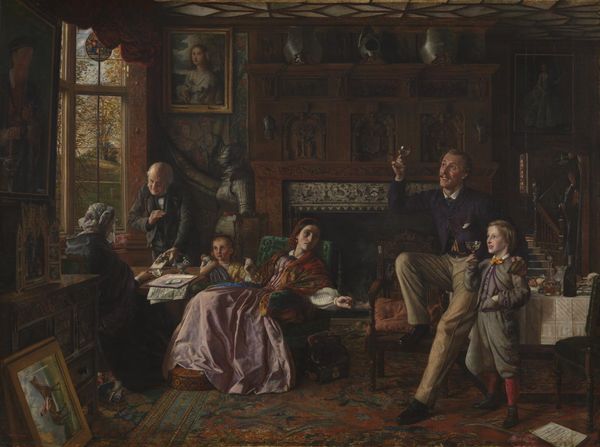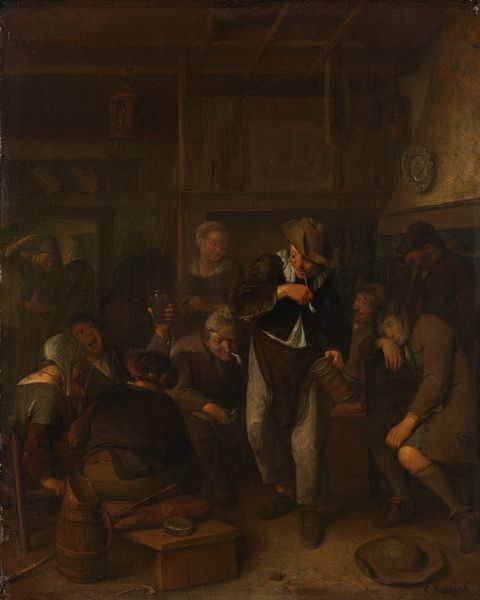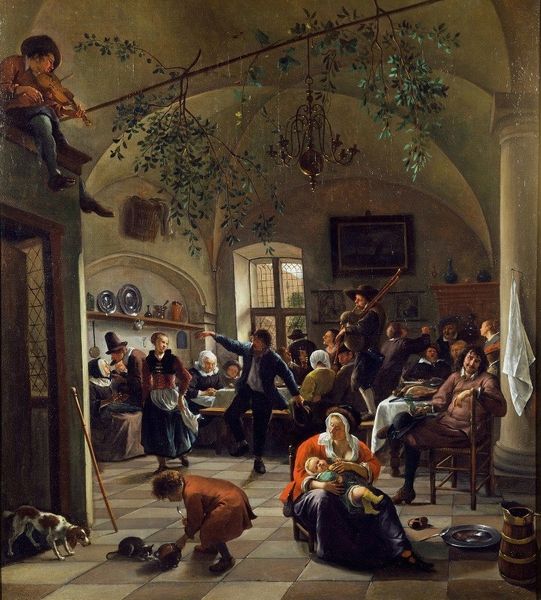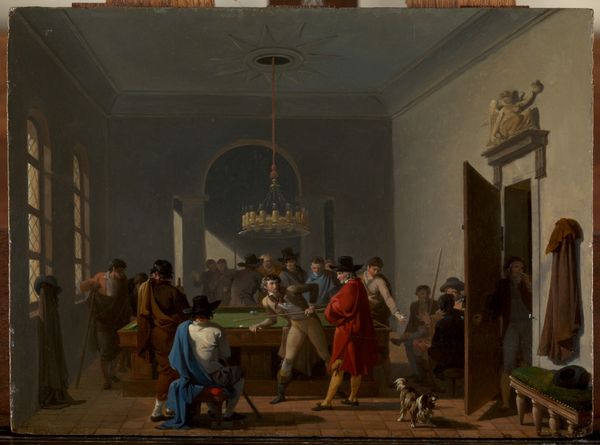
painting, oil-paint, canvas
#
portrait
#
painting
#
oil-paint
#
oil painting
#
canvas
#
underpainting
#
group-portraits
#
romanticism
#
painting painterly
#
genre-painting
#
academic-art
Dimensions: 62 cm (height) x 74 cm (width) (Netto), 71.8 cm (height) x 84.9 cm (width) x 8.5 cm (depth) (Brutto)
Constantin Hansen painted this gathering of Danish artists in Rome without a specified date. It captures a moment steeped in symbols of cultural exchange and artistic identity. Note the fez worn by one of the figures. This exotic headwear, a common souvenir from travels to the Ottoman Empire and North Africa, marks him as worldly, cultured, and, perhaps, a little theatrical. This Orientalist fascination was pervasive, influencing art and fashion. Consider how such symbols evolve. The fez, once a signifier of Ottoman allegiance, became a fashionable curiosity in Europe, stripped of its original political weight. This echoes the way classical motifs were reinterpreted throughout the Renaissance. These men, smoking pipes and gazing out over Rome, participate in a ritual of artistic pilgrimage, echoing the long tradition of artists drawn to Italy. Their presence here speaks to a powerful desire to connect with the past, to immerse themselves in the wellspring of Western art, reflecting our own deep, subconscious need to touch history. Symbols are a part of a cyclical story.
Comments
statensmuseumforkunst almost 2 years ago
⋮
A group of Danish artists are gathered in a room in Rome. Not, however, to celebrate as was their wont when meeting each other during their sojourns abroad.A discussion of artThe objective of their assembly is far more serious: They are discussing art. Speaking from the floor, the architect Gottlieb Bindesbøll (1800-1856) relates the experiences of his recent travels in Greece, a country that was unfamiliar territory to most Europeans at the time due to the many years of Turkish occupation. The other artists listen with varying degrees of interest and attention.Inspired by contemporary realityConstantin Hansen was very ambitious when painting this picture. He let himself be inspired by Renaissance depictions of artists, transforming them to suit the ideals of his own era. Through the doors we see the greatest source of inspiration for the artists of the time: contemporary reality. Constantin Hansen prepared the painting carefully, painting studies of each participant, and he had his fellow artist Albert Küchler (1803-1886) paint a study of himself.The artists in the paintingFrom the left the persons depicted are: the artist himself, Bindesbøll, Martinus Rørbye (1803-1848), Wilhelm Marstrand (1810-1873), Küchler, Ditlev Blunck (1798-1853), and Jørgen Sonne (1801-1890). With its serious atmosphere the painting stands out among the pictures of carefree Italian living that Danish audiences saw so many of at the time.?
Join the conversation
Join millions of artists and users on Artera today and experience the ultimate creative platform.
statensmuseumforkunst almost 2 years ago
⋮
A group of Danish artists are gathered in a room in Rome. But not in celebration. Their purpose is far more serious: they are talking about art. In the middle of the floor, the architect Gottlieb Bindesbøll talks about his travels in Greece. Perhaps Constantin Hansen wished to distance himself from the general expectation of jolly tourist images. Perhaps he wished to accentuate the artists’ self-image as serious intellectual workers. The sombre tone makes the painting stand apart from the many carefree depictions of Italian life that Danish audiences preferred. However, Hansen was inspired by Renaissance depictions of artists and prepared for the work by painting studies of the party. L to R: The artist, Gottlieb Bindesbøll, Martinue Rørbye, Wilhelm Marstrand, Albert Küchler, Ditlev Blunck, and Jørgen Sonne.
